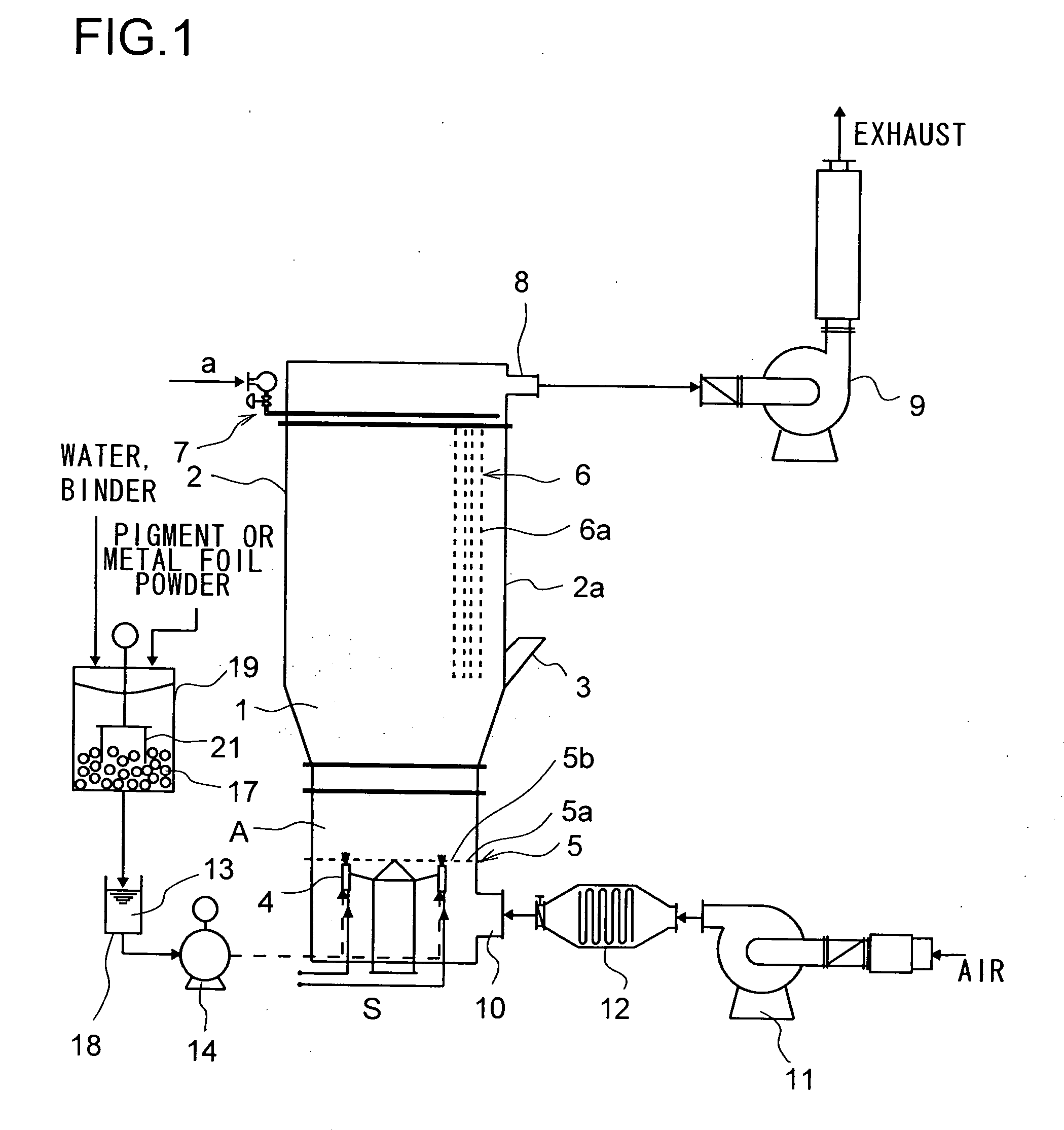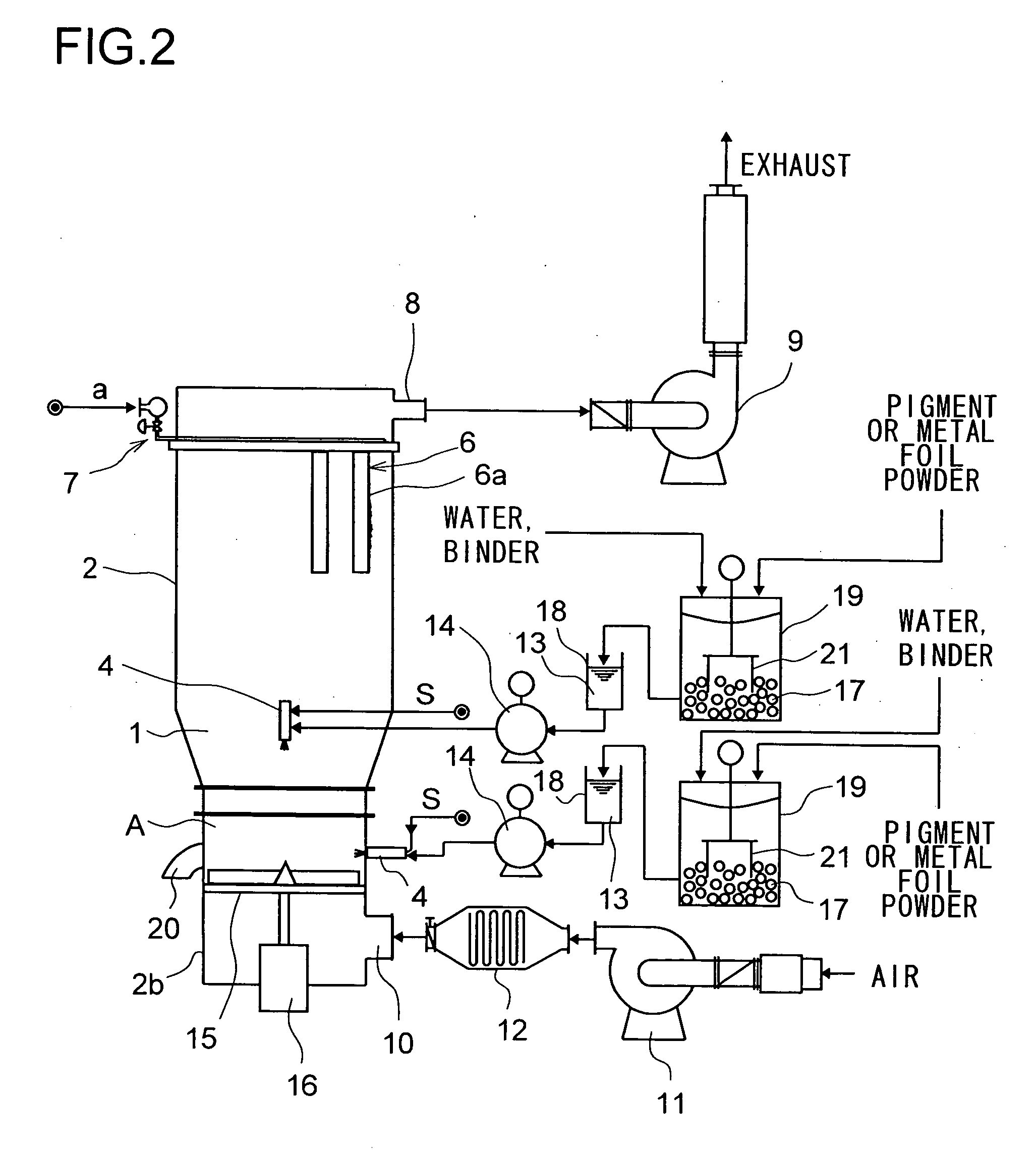Process for producing powder coating composition and powder coating composition obtained by the production process
- Summary
- Abstract
- Description
- Claims
- Application Information
AI Technical Summary
Benefits of technology
Problems solved by technology
Method used
Image
Examples
example 1
PRACTICAL EXAMPLE 1
[0057] Used as the materials for slurry were: 50 g of a colorant pigment (“Pigment Yellow 83”, manufactured by Sanyo Color Works, Ltd.) with a mean particle size of 14 μm; and 60 g of a binder liquid (“Superflex” manufactured by Dai-ichi Kogyo Seiyaku Co., Ltd.) having a urethane elastomer dispersed in water. These were, along with 890 g of water, fed into a wet ball mill (“Aquamizer AQ-5” manufactured by Hosokawamicron Corporation) to produce slurry. Used as the balls for filling the interior of the wet ball mill were zirconia ball with an inner diameter of 3 mm. The wet ball mill was operated at a rotation rate of 250 rpm for two hours. Through this treatment, the colorant pigment came to have a mean particle size of 2 μm or less, and slurry was obtained that has the pigment well dispersed therein.
[0058] On the other hand, used as a resin powder as a base powder was 1 000 g of a white polyester powder (manufactured by Kuboko Paint Co., Ltd.). This was fed into ...
PUM
| Property | Measurement | Unit |
|---|---|---|
| Particle size | aaaaa | aaaaa |
| Particle size | aaaaa | aaaaa |
| Particle size | aaaaa | aaaaa |
Abstract
Description
Claims
Application Information
 Login to View More
Login to View More - R&D
- Intellectual Property
- Life Sciences
- Materials
- Tech Scout
- Unparalleled Data Quality
- Higher Quality Content
- 60% Fewer Hallucinations
Browse by: Latest US Patents, China's latest patents, Technical Efficacy Thesaurus, Application Domain, Technology Topic, Popular Technical Reports.
© 2025 PatSnap. All rights reserved.Legal|Privacy policy|Modern Slavery Act Transparency Statement|Sitemap|About US| Contact US: help@patsnap.com


